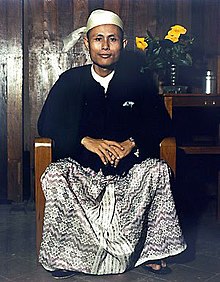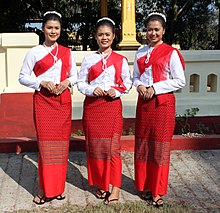
A folk costume expresses a national identity through clothing or costume, which is usually associated with a specific region or period of time in history. It can also indicate social, marital, or religious status. If the costume is used to represent the culture or identity of a specific ethnic group, it is usually known as ethnic costume. Such costumes often come in two forms: one for everyday occasions, the other for traditional festivals and formal wear. The word "costume" in this context is sometimes considered pejorative due to the multiple senses of the word, and in such cases "clothing", "garments" or "regalia" can be substituted without offense.

A sarong or a sarung is a large tube or length of fabric, often wrapped around the waist, worn in Southeast Asia, South Asia, Western Asia, Northern Africa, East Africa, West Africa, and on many Pacific islands. The fabric often has woven plaid or checkered patterns, or may be brightly colored by means of batik or ikat dyeing. Many modern sarongs have printed designs, often depicting animals or plants. Different types of sarongs are worn in different places in the world, notably the lungi in the Indian subcontinent and the izaar in the Arabian Peninsula.
Clothing in India varies with the different ethnicities, geography, climate, and cultural traditions of the people of each region of India. Historically, clothing has evolved from simple garments like kaupina, langota, achkan, lungi, sari, to rituals and dance performances. In urban areas, western clothing is common and uniformly worn by people of all social levels. India also has a great diversity in terms of weaves, fibers, colors, and the material of clothing. Sometimes, color codes are followed in clothing based on the religion and ritual concerned. The clothing in India also encompasses a wide variety of Indian embroidery, prints, handwork, embellishments, and styles of wearing clothes. A wide mix of Indian traditional clothing and western styles can be seen in India.

The lungi is a type of sarong that originated in modern day Bangladesh but is now found throughout the Subcontinent. The lungi, which usually multicoloured, is a men's skirt usually tied around the lower waist below the navel. It can be worn as casual wear and night wear. It is favoured in hot and humid climates where the airflow it allows makes it more comfortable than alternatives. It is mostly worn in Bangladesh & West Bengal.

The malong is a traditional Filipino-Bangsamoro rectangular or tube-like wraparound skirt bearing a variety of geometric or okir designs. The malong is traditionally used as a garment by both men and women of the numerous ethnic groups in the mainland Mindanao and parts of the Sulu Archipelago. They are wrapped around at waist or chest-height and secured by tucked ends, with belts of braided material or other pieces of cloth, or are knotted over one shoulder. They were traditionally hand-woven, with the patterns usually distinctive to a particular ethnic group. However, modern malong are usually machine-made or even imported, with patterns that mimic the traditional local designs.

Pailin is a province in western Cambodia at the northern edge of the Cardamom Mountains near the border of Thailand. This province is surrounded by Battambang province, and was officially carved out of Battambang to become a separate administrative division after the surrender of the Ieng Sary faction of the Khmer Rouge in 1996. Pailin is known to much of the world for having long been a stronghold of the Khmer Rouge, remaining under their control long after they were defeated in 1979 and serving from 1994 to 1998 as the capital of the Provisional Government of National Union and National Salvation of Cambodia. Within Cambodia, Pailin is known for its natural resources, namely precious gems and timber.

A longyi is a sheet of cloth widely worn in Myanmar (Burma). It is approximately 2 metres (6.6 ft) long and 80 centimetres (2.6 ft) wide. The cloth is often sewn into a cylindrical shape. It is worn around the waist, running to the feet, and held in place by folding fabric over without a knot. In ancient times, Lethwei fighters would hitch it up to compete. This folding technique is still being used in modern days when people play chinlone.
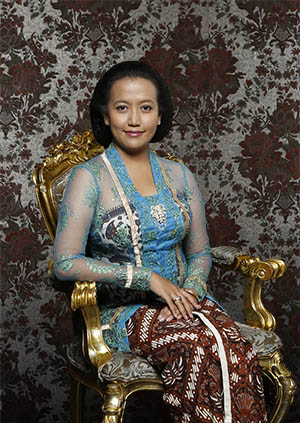
A kebaya is an upper garment traditionally worn by women in Southeast Asia, notably in Brunei, Indonesia, Malaysia, Singapore and Southern Thailand. It is also worn in parts of southern Philippines and Cambodia.
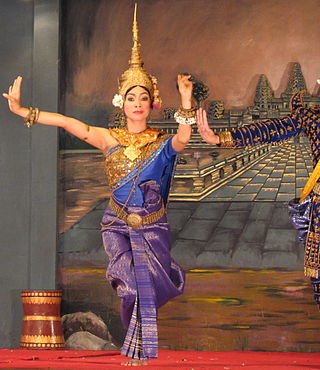
A sampot, a long, rectangular cloth worn around the lower body, is a traditional dress in Cambodia. It can be draped and folded in several different ways. The traditional dress is similar to the dhoti of Southern Asia. It is also worn in the neighboring countries of Laos and Thailand where it is known as pha nung.

Pakaian is the term for clothing in Malaysia's national language. It is referring to things to wear such as shirts, pants, shoes etc. Since Malaysia is a multicultural nation: Malay, Chinese, Indian and hundreds of other indigenous groups of Malay peninsula and Borneo, each has its own traditional and religious articles of clothing all of which are gender-specific and may be adapted to local influences and conditions. Previously, traditional clothes were worn daily. However, by excluding Baju Melayu, Baju Kurung many are now only worn on special occasions such as marriage ceremonies and cultural events.

Khmer traditional clothing refers to the traditional styles of dress worn by the Khmer people from ancient times to the present.

The gaung baung is a traditional Burmese kerchief and part of the traditional attire of many ethnic groups inhabiting modern day Burma and Northern Thailand, particularly among most of the Buddhist-professing ethnic groups: the Bamar, Mon, Arakanese, Shan, and Tai Yuan peoples. The design varies from region to region, but share basic similarities that distinguish the gaung baung from the kerchief.

The Kula people are the descendants of migrants from Burma who settled in the Pailin-Chanthaburi region along the Cambodia–Thailand border during the 19th century. To which Burmese ethnic group the Kulas belong remains uncertain, with some speculating a Bamar, Shan or multi-ethnic heritage.
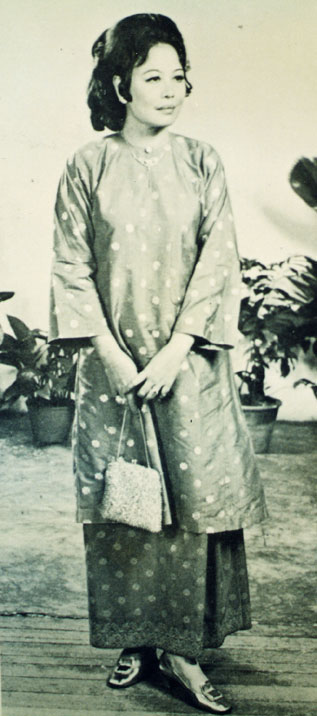
Baju Kurung is a traditional attire of Malays and traditionally worn by women in Brunei, Indonesia, Malaysia, Singapore and southern Thailand. This type of traditional attire is the national dress of Brunei and Malaysia. In Indonesia, this dress is also worn as a regional attire, commonly observed on the island of Sumatra, particularly by the ethnic Malay and Minangkabau women.

Croatian national costume, also called as Croatian traditional clothing or Croatian dress, refers to the traditional clothing worn by Croats living in Croatia, Bosnia and Herzegovina, Serbia, with smaller communities in Hungary, Austria, Montenegro, and Romania. Since today Croats wear Western-style clothing on a daily basis, the national costumes are most often worn with connection to special events and celebrations, mostly at ethnic festivals, religious holidays, weddings, and by dancing groups who dance the traditional Croatian kolo, or circle dance.

The national costume of Indonesia is the national attire that represents the Republic of Indonesia. It is derived from Indonesian culture and Indonesian traditional textile traditions. Today the most widely recognized Indonesian national attires include batik and kebaya, although originally those attires mainly belong within the island of Java and Bali, most prominently within Javanese, Sundanese and Balinese culture. Since Java has been the political and population center of Indonesia, folk attire from the island has become elevated into national status.

Traditional Thai clothing is called chut thai, which literally means 'Thai outfit'. It can be worn by men, women, and children. Chut thai for women usually consists of a pha nung or a chong kraben, a blouse, and a sabai. Northern and northeastern women may wear a sin instead of a pha nung and a chong kraben with either a blouse or a suea pat. Chut thai for men includes a chong kraben or pants, a Raj pattern shirt, with optional knee-length white socks and a sabai. Chut thai for northern Thai men is composed of a sado, a white Manchu-styled jacket, and sometimes a khian hua. In formal occasions, people may choose to wear a so-called formal Thai national costume.
Sindhi clothing are a part of the Sindhi culture. Sindhi women and men wear the Shalwar Qameez or the Kurta with Pyjama. Women also wear Sari or ghagra. However, before the adoption of the Shalwar kameez, kurta, the Sari as well as other articles of clothing, Sindhis had their own traditional costumes.
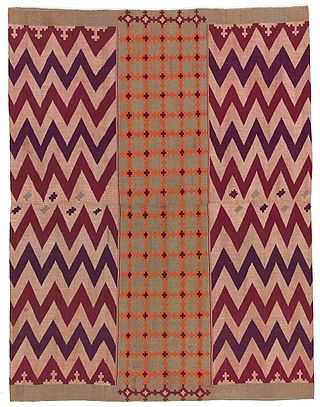
The patadyong, is an indigenous Philippine rectangular or tube-like wraparound skirt worn by both men and women of the Visayas islands and the Sulu Archipelago, similar to the Malong, or Sarong. It was also historically worn in parts of Luzon like Pampanga and Sorsogon.

Acheik or luntaya acheik, is the name of the indigenous Burmese textile pattern. It features intricate waves interwoven with bands of horizontal stripes, embellished with arabesque designs. Luntaya, which literally means a "hundred shuttles," refers to the time-consuming, expensive, and complex process of weaving this pattern, which requires using 50 to 200 individual shuttles, each wound with a different color of silk. The weaving is labor-intensive, requiring at least two weavers to manipulate the shuttles to achieve the interwoven wave-like patterns.









